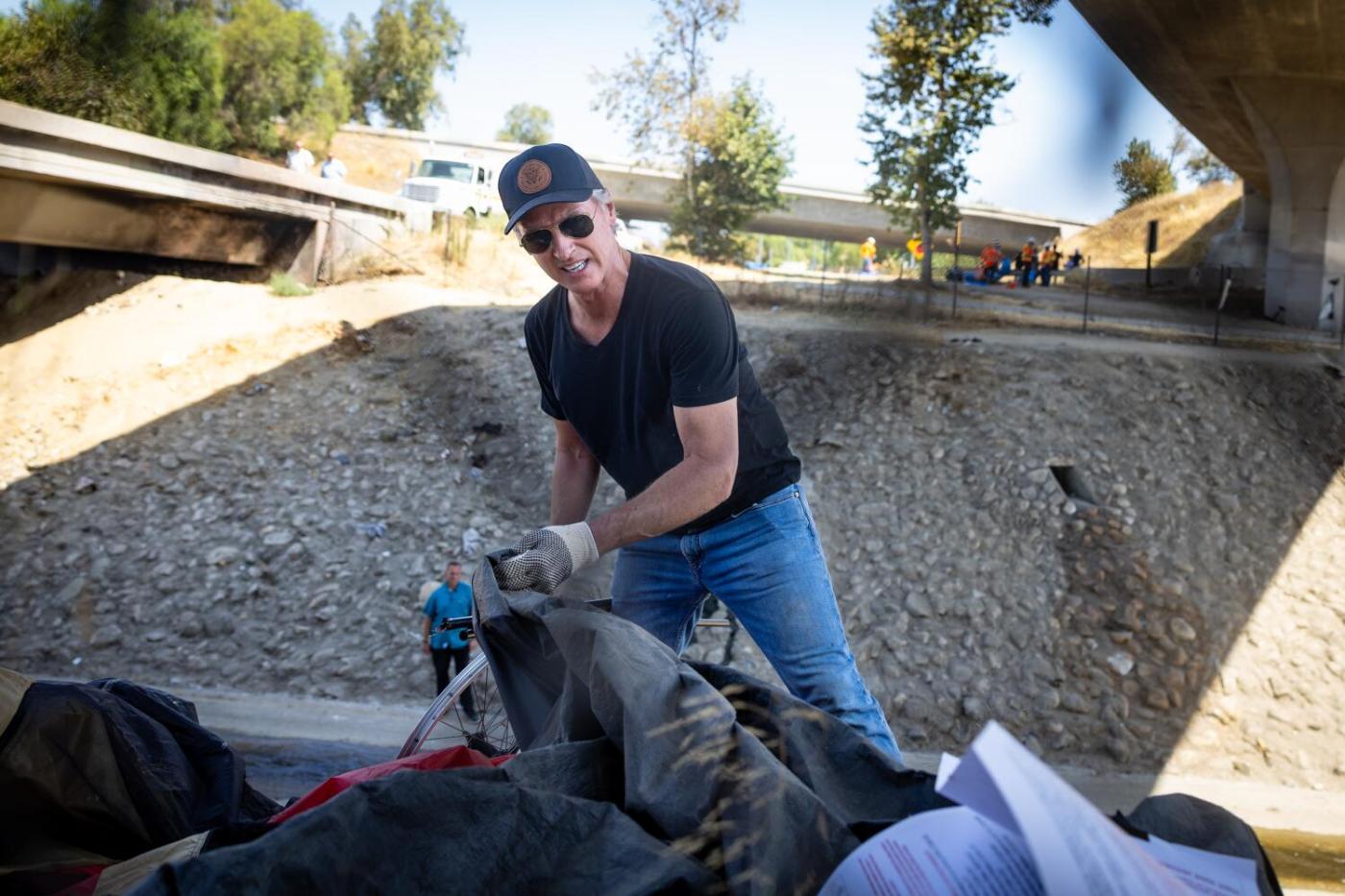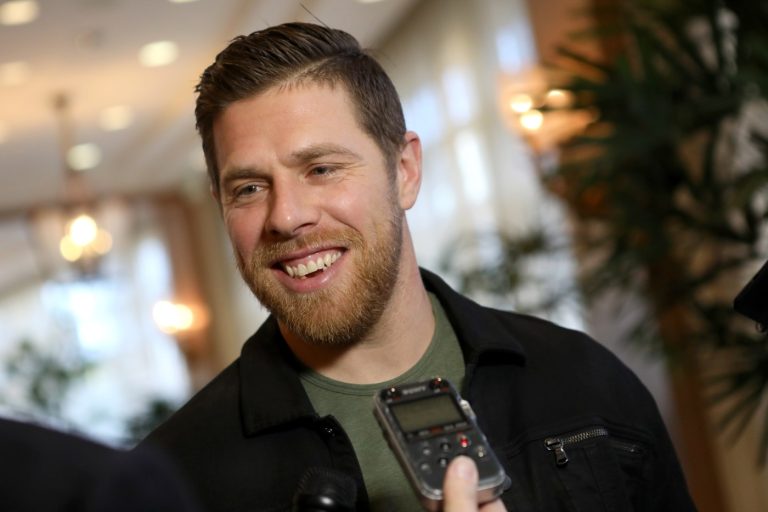Last week Gov. Gavin Newsom donned blue jeans and a t-shirt to participate in a well-choreographed cleanup of a squalid encampment in Los Angeles, declaring that homelessness is the “biggest scar on the reputation of California.”
That it is, and it’s an image that former President Donald Trump is weaponizing in his presidential duel with a Californian, Vice President Kamala Harris.
However, California’s seemingly intractable homelessness crisis is also the biggest scar on Newsom’s governorship, one he wants to erase by blaming city and county officials for a lack of evident progress.
Thursday’s media event, chronicled by Newsom’s $200,000-a-year personal photographer, was clearly aimed at portraying him as diligently working to solve the problem, while locals drag their feet.
“I’m here on behalf of 40 million Californians who are fed up,” Newsom said, adding, “I’m one of them. I want to see results.
“We have cleared every hurdle,” he said, referring to a recent Supreme Court decision making it easier for local officials to clear encampments. “We’re done with excuses.”
For the umpteenth time, Newsom threatened to “redirect” money the state has been sending to local governments for homelessness programs if he doesn’t see progress.
However local officials have said those threats are the biggest impediment to creating permanent facilities and services to move California’s homeless residents — approaching 200,000, by far the most of any state — off the streets.
Most of the state money has been in the form of one-year grants and without guarantees of long-term funding; the mayors and other officials say they cannot maintain ongoing programs.
“Now is not the time to play politics when people’s lives are at stake,” Carolyn Coleman, CEO of the League of California Cities, replied in 2022 to one of Newsom’s periodic threats. “Failing to release state funding will not put roofs over the heads of Californians or deliver desperately needed supportive services.”
Moreover, while Newsom has talked a good game about reducing homelessness, his own administration has been less than efficient.
Earlier this year, state Auditor Grant Parks sharply criticized Newsom’s Interagency Council on Homelessness, saying that in the three years since a previous audit found the state was not effectively coordinating homelessness efforts, the agency still “has not continued to track and report on this information since that time.”
Clearing encampments, as Newsom and state workers did last week at a state-owned site, is the easiest aspect of the crisis. But what happens to residents when their camps are cleared?
“We gotta be somewhere,” Tré Watson, who lives in a tent in Santa Cruz, told CalMatters. Watson said he and others are running out of options. “We can’t hover. We come here, they run us away. We go to any park and they run us away. We go to the Pogonip (nature preserve), and they bring bulldozers.”
Related Articles
Goldberg: Trump’s big lie about Harris’ crowds foreshadows election chaos ahead
Spinetto: The age of the big Latin American family is over
Tufekci: Wealthy nations must prioritize the global fight against mpox
Klein: Biden made Trump bigger. Harris makes him smaller
Opinion: Harris must persuade Gaza protesters, not dismiss them
A situation in Sacramento, just a few minutes from the Capitol, illustrates that difficulty.
For the past two years, about 50 people have lived in city-issued trailers parked in a vacant lot dubbed Camp Resolution. However the lease on the property expired this month and the city wants to close the camp, labeling it “a failed experiment” with unsanitary conditions.
Lawyers representing the residents are trying to block closure, but a judge refused to intervene. City officials say camp residents have rebuffed efforts to be moved to other sites or into housing.
It’s virtually certain that encampments of some kind will still be very visible when Newsom’s governorship ends 29 months hence. Will they continue to be part of his legacy, or by then will he have shifted the onus onto others?
Dan Walters is a CalMatters columnist.












